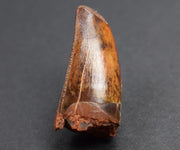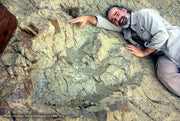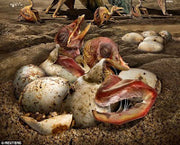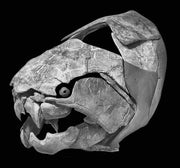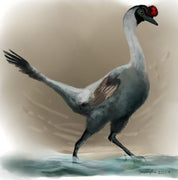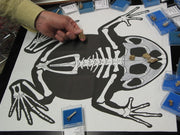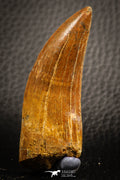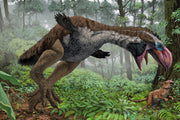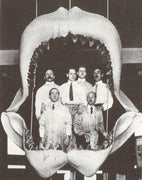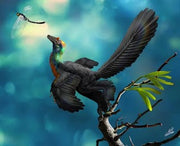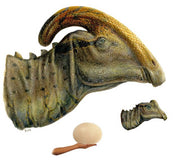The picture above is a Sinornithosaurus millenii displayed in the Hong Kong Science Museum. Photo by Laikayiu.
Nowadays it's not rare to see drawings or mock-ups of dinosaurs with feathers, but when the Sinornithosaurus was discovered in 1999, it was only the fifth dinosaur species which was discovered with fossilized feathers.

The sites in China have only grown their lists of feathered dinosaurs since then. The explanation is simple: the sediments that conserved the fossils had an exceptional quality. So much that even the finest details have been fossilized. The feathers can be studied with great detail, and the Sinornithosaurus gave a lot of information in this sense. The Sinornithosaurus is classified as a feathered member of the Dromaeosauridae family. The feathers covered all the body and formed primitive wings, which were not apt for flying. Although maybe they did allow to glide among trees.
The Sinornithosaurus is classified as a feathered member of the Dromaeosauridae family. The feathers covered all the body and formed primitive wings, which were not apt for flying. Although maybe they did allow to glide among trees.
These feathers cannot be distinguished from the ones found in birds from that same period, but differ from feathers in today's birds: These dinosaurs' feathers do not have secondary ramifications nor barbules —small hooks which allow birds to form a uniform layer with their feathers, sticking all of them.
All this information had a great value, but the Sinornithosaurus kept a more interesting surprise. Scientists discovered that one of the teeth had the ideal characteristics to inject poison. In addition, the cranium had a hole and a duct similar to the ones snakes have. The paleontologists concluded we probably had the first venemous dinosaur known.

Don't hesitate to check out our collection of Dromaeosaur fossils.
Illustrations: www.dinosaurusi.com
Photographies: www.raptorwing.tumblr.com
Source: Nature Journal. Several publications.
Germán Z. López
This post can also be read in Spanish at our partner blog Made in Pangea.












